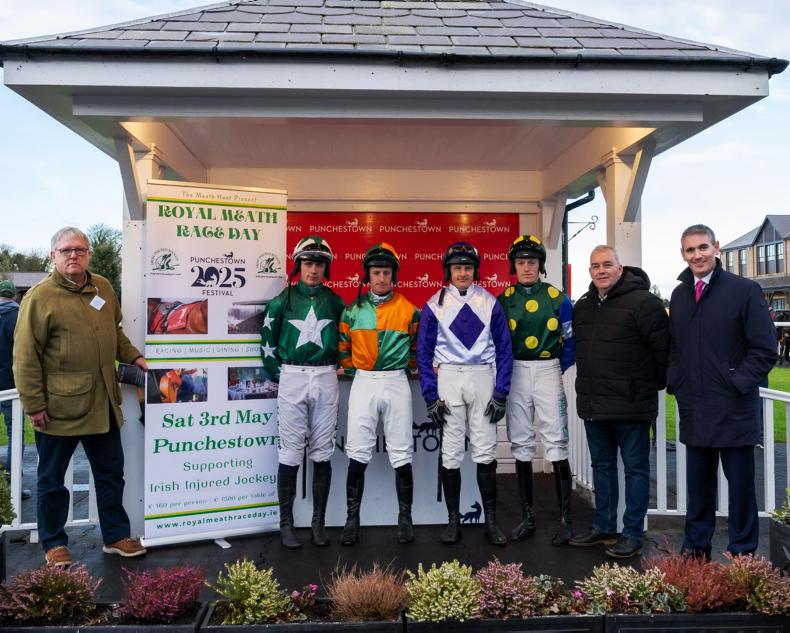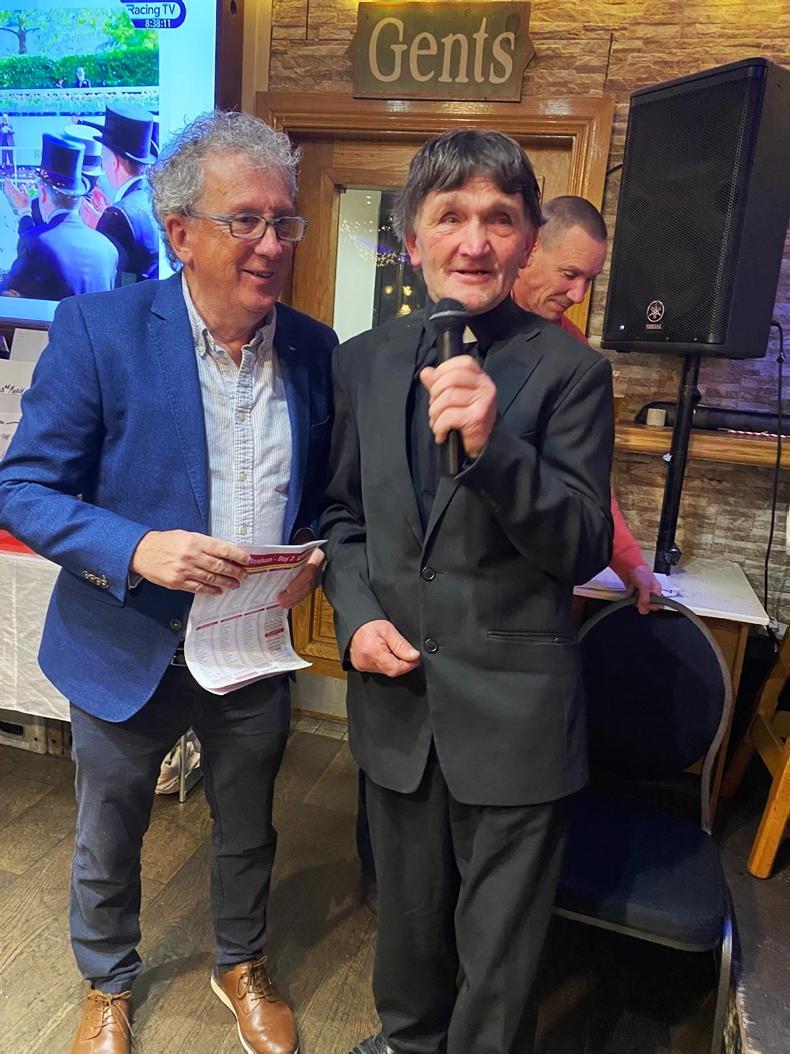THIS summer’s annual racing museum display in Kildare town’s Old Court House has as its theme the Rogers family, three generations of Curragh trainers. Now based in Airlie Stud, Maynooth, the Rogers family visited the museum last Saturday where they were inducted into the Kildare Derby Festival’s Hall of Fame.
The reign of the Rogers family at the top of the training profession spanned the period 1915 to 1970.
Fundamentally flat trainers, they accounted for no fewer than 25 Irish classics, while the third generation practitioner saddled two Epsom Derby winners for good measure.
Their Irish tenure began in 1915, caused by the dramatic contraction of racing in Britain following the outbreak of World War I. John Thomas ‘Jack’ Rogers had made a name for himself as a jump jockey in England, deprived of the winning ride on Kirkland in the 1906 Grand National by an untimely eye injury. He had made a bright start to his training career in Cheltenham before circumstances dictated a move across the Irish Sea.
Basing himself in Crotanstown, on the northern edge of the Curragh, Jack Rogers captured the imagination and respect of the Irish racing public by the exploits of his chesnut charge Golden Fleece. Unbelievably versatile, Golden Fleece won the 1918 Galway Plate, followed by the Leopardstown Chase. On the flat Golden Fleece won nine times, from six furlongs to two miles.
Such was his strike-rate and his widespread following, one prominent bookmaker was moved to declare: “It would have paid me to have given five thousand for that horse as a yearling. And then have him shot!”
Jack Rogers opened his classic account in 1925 when Flying Dinah won the Irish 1000 Guineas. Ten years later Jack ensured the first of three consecutive Irish champion trainer’s titles by his clean sweep of the Irish classics. Sir Victor Sassoon’s Museum carried off the Irish Triple Crown – the first of only two colts to do so – besides bagging the valuable Ebor Handicap at York. Bookmaker Dick Duggan’s Smokeless accounted for the two fillies’ classics. Two years later Jack Rogers struck Curragh gold again when Sir Victor Sassoon’s Phideas won both the Irish 2000 Guineas and the Irish Derby.
Aged 70-odd, Jack Rogers handed over his Crotanstown stable to his elder son Bryan, who sustained his father’s demanding standards in the short time he was spared to do so. An enthusiastic amateur pilot, Bryan signed up at the outbreak of war in September 1939, only to meet his death in active service when his plane crashed on July 17th, 1942.
In the interim Jack had come out of retirement, only to collapse and die on his way home from saddling a winner at Limerick Junction on June 5th, 1940.
Younger son Darby Rogers, previously involved in racing in England, picked up the reins promptly, saddling a winner the very next day. Later that year he opened his Irish classic account with William Barnett’s Harvest Feast in the Irish St Leger, the first of Darby’s eight Irish classic winners.
The most significant of those was perhaps Dark Issue in the 1955 Irish 1000 Guineas. She happened to belong to Sir Winston Churchill, to whom Darby’s son Tim had served as aide-de-camp. While Churchill was very keen to attend the Curragh that day, diplomatic pressures from Dublin scuppered that escapade.
Darby Rogers handed in his trainer’s licence in 1958, satisfied that the family name was once again in safe hands. J.M. ‘Mickey’ Rogers, his 21-year-old son, had served his time with his grandfather, Jack Rogers, in Crotanstown. Creating a new stable around nearby Stepaside Cottage, designed to accommodate a maximum of 18 horses, his emphasis on quality rather than quantity was justified by Mrs J.H. Tursby’s DCM in the 1952 Irish 2000 Guineas.
It was her husband’s turn two years later with Arctic Wind.
By 1957 Mickey had unearthed a colt, bought for a song by Sir Victor Sassoon, that he became convinced could hit the heights. To this end he persuaded veteran classic specialist Charlie Smirke to postpone his retirement, with the prospect of his fourth Epsom Derby winner. Smirke’s misgivings were dispelled when Hard Ridden easily won the Irish 2000 Guineas. The purists remained sceptical. How could the son of a sprinter, Hard Sauce, win the blue riband? Well, he did just that, becoming the first Irish-trained Epsom Derby winner since Orby in 1907.
Mickey Rogers hit even greater heights in 1964. Santa Claus, another bargain yearling, won the Irish 2000 Guineas, the Epsom Derby and the Irish Sweeps Derby.
Mickey retired in 1970, to enjoy the rest of his 60 years.
Tim Rogers established Airlie Stud after World War II and it passed into his wife Sonia’s hands when he died, aged just 62, in 1984. Sonia and her son Anthony now run the stud together.


 This is a subscriber-only article
This is a subscriber-only article
 It looks like you're browsing in private mode
It looks like you're browsing in private mode










SHARING OPTIONS: